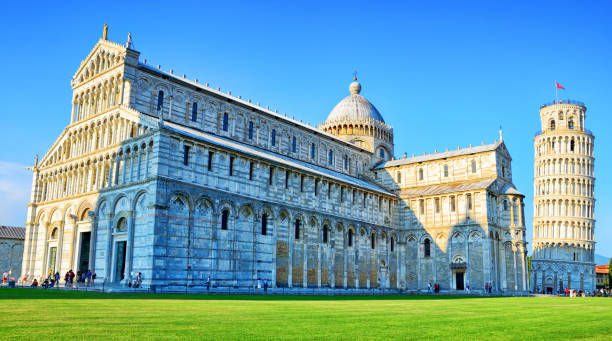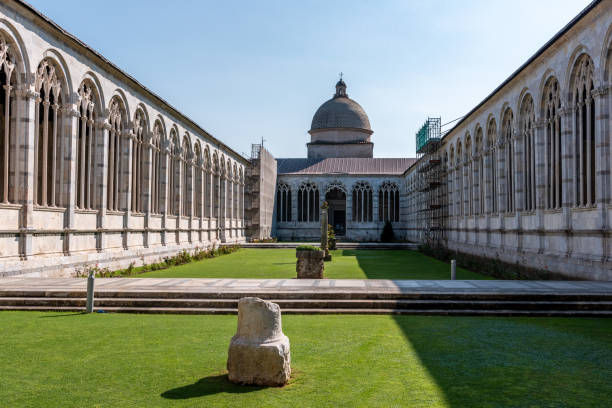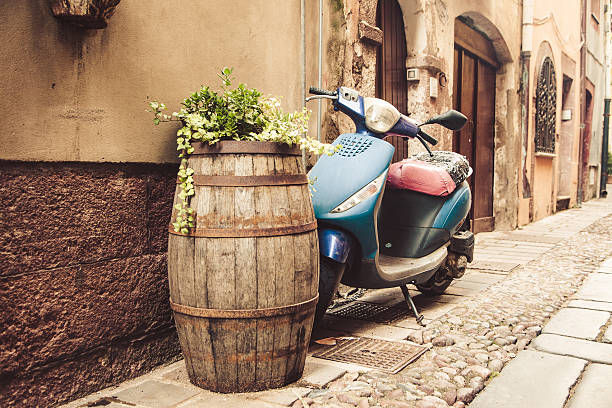10 things to do in Pisa:
Pisa, a venerable city in Tuscany, central Italy, is globally renowned for its iconic Leaning Tower. This unintended architectural marvel stands in the Piazza dei Miracoli, a UNESCO World Heritage site also hosting the majestic Pisa Cathedral. Beyond the tower, Pisa flaunts a rich history, stemming from its days as a maritime power.
1. Leaning Tower of Pisa:

Renowned worldwide, this bell tower captivates tourists with its unintended tilt, due to unstable foundation soils. Constructed over two centuries, beginning in 1173, the tower's inclination halted various construction attempts, eventually leading to its unique slant. Standing at 56 meters, with a 3.97-degree lean, visitors can ascend its 294 steps for breathtaking views of Pisa.
The UNESCO World Heritage site not only offers a picturesque backdrop but also a glimpse into the rich history and resilience of medieval engineering. Remember to capture the iconic pose, pretending to hold up the tower, for a cherished memento of your visit.
2. Piazza dei Miracoli:
The Piazza dei Miracoli, also known as the Piazza del Duomo, is a world-renowned architectural complex in the heart of Pisa, Italy, and a prime example of medieval European art. Designated a UNESCO World Heritage Site, it is celebrated for its four masterpieces of medieval architecture: the cathedral, the campanile (Leaning Tower of Pisa), the baptistery, and the monumental cemetery.
These religious structures, constructed between the 11th and 14th centuries, reflect the wealth and power of Pisa as an important Mediterranean trading hub. The 'Field of Miracles' embodies the pinnacle of Pisan Romanesque architecture, with its symphony of white marble, harmonious proportions, and intricate sculptures. Visitors from around the globe are drawn to its beauty and iconic leaning campanile, making it a symbol of Italy's rich cultural heritage.

3. Cathedral of Pisa:

The Cathedral of Pisa, also known as the Cattedrale Metropolitana Primaziale di Santa Maria Assunta, is a masterpiece of Romanesque architecture, located in the famous Piazza dei Miracoli (Square of Miracles) in Pisa, Italy.
Consecrated in 1118, its striking design features a harmonious use of columns, arches, and intricate marble inlays. Flanked by the iconic Leaning Tower, which serves as its bell tower, the cathedral's façade is adorned with a multitude of sculptures and possesses a magnificent bronze door. The opulent interior is just as impressive with its gilded ceiling, mosaic works, and a notable pulpit by Giovanni Pisano. This architectural gem forms a significant part of a UNESCO World Heritage Site and remains a pivotal symbol of religious significance and historical grandeur in Tuscany.
4. Arno River:
The Arno River is a significant waterway in Central Italy, and it flows through the heart of Pisa, a historic city in the Tuscany region. Originating from the Apennines, the river spans approximately 241 kilometers before emptying into the Ligurian Sea. As it meanders through Pisa, the Arno hugs the city center, gracing it with picturesque views that have inspired artists for centuries.
The riverbanks, lined with beautiful buildings and stone bridges, offer a romantic setting, especially at sunset. Pivotal to Pisa's development, the Arno facilitated trade and transport during the city's maritime power peak, contributing to its rich cultural heritage. The river remains integral to Pisan life, reflecting the city's enduring charm.

5. Camposanto Monumentale:

The Camposanto Monumentale, or Monumental Cemetery, is a historic and prominent feature in the city of Pisa, Italy. Situated in the famous Piazza dei Miracoli (Square of Miracles), it is part of a UNESCO World Heritage site that includes the cathedral, the baptistery, and the iconic leaning tower. Inaugurated in 1278, the Camposanto is known for its elegant Gothic architecture, including a rectangular cloister enclosing a tranquil garden.
The structure's walls once housed an impressive collection of Roman sarcophagi and Renaissance sculptures. The inner walls were adorned with frescoes by renowned artists, many of which suffered damage during World War II but have since been partially restored. This cemetery is a contemplative site of significant historical and artistic value.
6. Pisa's museums:
The most renowned is the Museo dell'Opera del Duomo, housing artifacts and art from the illustrious Cathedral and the staggering Leaning Tower. Here, one can delve into medieval sculptures, Renaissance paintings, and Romanesque relics. Just steps away, the Museo delle Sinopie showcases the preparatory sketches for the Campo Santo's frescoes, offering a glimpse into the artists' creative processes.
The Palazzo Blu, a splendid art gallery by the Arno River, frequently hosts international exhibitions. Meanwhile, the National Museum of San Matteo guards an impressive collection of Tuscan artworks, spanning sculptures, paintings, and illuminated manuscripts. Pisa's museums, each a cultural gem, collectively unfurl the city's storied tapestry through curated windows into the past.

7. University of Pisa:

The University of Pisa, known in Italian as Università di Pisa, is one of Italy's oldest and most distinguished educational institutions. Founded in 1343 by an edict of Pope Clement VI, it stands in the historic city of Pisa, famed for the iconic Leaning Tower.
The university excels in a multitude of disciplines, but it is perhaps most renowned for its contributions to the field of mathematics, largely due to the legacy of the famous mathematician Fibonacci, who was from Pisa. The university fosters a rich academic tradition, attracting students and scholars from around the globe. Its commitment to research and education is reflected in its comprehensive range of faculties which include humanities, sciences, engineering, agriculture, and medicine.
8. Piazza dei Cavalieri:
Piazza dei Cavalieri, or Knights' Square, is a landmark historical hub in Pisa, Italy, renowned for its medieval architecture and vibrant history. Once the heart of the city's political power, it was transformed under Cosimo I de' Medici in the 16th century into the headquarters of the Order of the Knights of St. Stephen, from which the square draws its name.
The piazza is flanked by prestigious buildings like the Palazzo della Carovana with its elaborate sgraffito facades, the Palazzo del Consiglio dei Dodici, and the church of Santo Stefano dei Cavalieri, designed by Vasari. Renowned as a center of education, the square is also home to the Scuola Normale Superiore, an elite university founded by Napoleon, adding to its legacy as a site of intellectual enlightenment.

9. Tuscan cuisine:

Characterized by robust flavors and aromatic herbs like rosemary and thyme, its dishes often feature local olive oil, legumes, cheese, and premium meats like Chianina beef. Tuscans are ardent about their bread, which traditionally is made without salt. Staples such as the hearty soup ribollita, wild game, and the deceptively humble yet flavorful Pappa al Pomodoro showcase the region's agricultural bounty. Seafood also figures prominently along the Tuscan coast.
Typical desserts, like cantucci almond biscuits, are often accompanied by the sweet dessert wine, Vin Santo. Tuscan cuisine is not only a reflection of its landscape and resources but also its cultural heritage of conviviality and shared meals.
10. Take a day trip:
A day trip unfolds its rich history, where marbled facades and Romanesque structures line the vibrant piazzas. Start at the Piazza dei Miracoli, home to the Tower, the magnificent Duomo, and the serene Camposanto. Indulge in a gelato as you amble along the Arno River, absorbing the tranquil rhythm of local life.
Discover hidden gems like the medieval Church of Santa Maria della Spina, and savor traditional Tuscan cuisine at a bustling trattoria. Pisa's blend of architectural marvels and cultural charm makes it an unforgettable day excursion.
